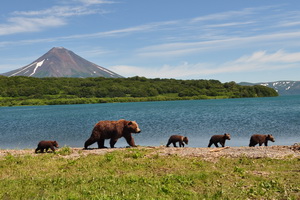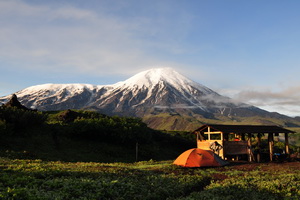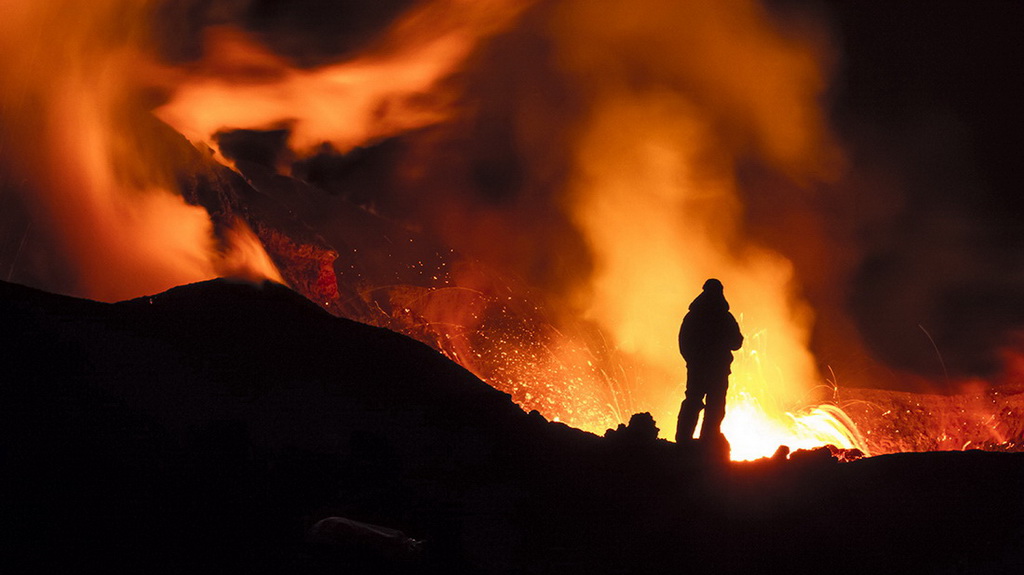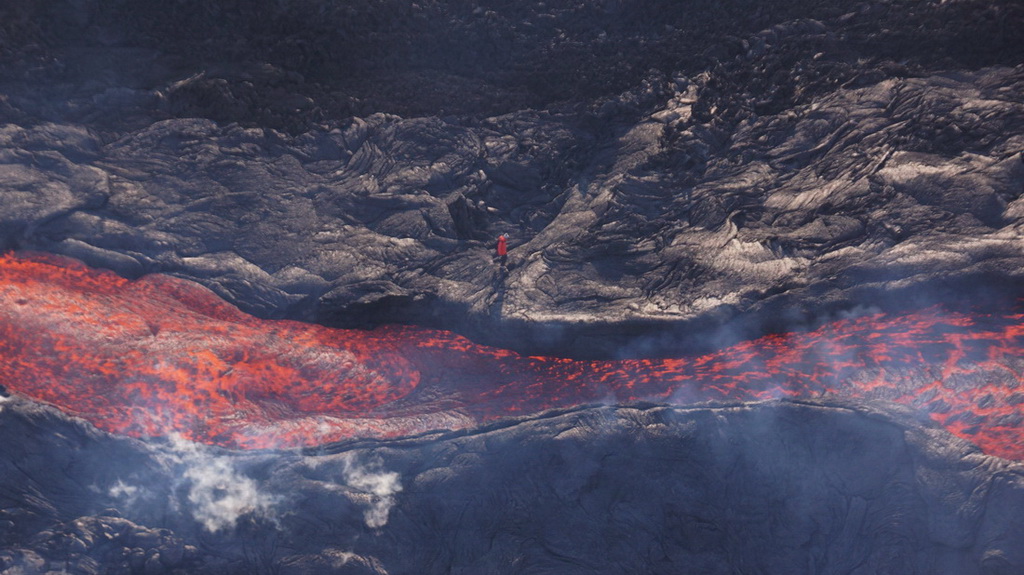Main / Sights
Fissure eruption of 2012-13
It was believed that after the major eruption of the Tolbachik Volcano in 1975-76 it will need more than 200 years to accumulate the necessary amount of magma, which will be enough for a new large eruption. But early in the morning on November 27, 2012 there were registered small earthquakes at the depth of less than 5 kilometers under Tolbachik volcano.
Volcanologists did not even have enough time to warn of the impending eruption. In the evening, on the southern slope of Flat Tolbachik a crack opened, and a new eruption began.
In the early days it was impossible to see the details because of the bad weather. It was only on November 29 that the total crack length of about 3.5 km was revealed and its altitude of 1500-2000 meters. Along the crack numerous cinder cones formed, lava flowed from them. The height of the ejection bombs reached 200 meters. The ash cloud rose to the altitude of 60 kilometers. Lava flows paved clearings in the surrounding woods. The front of the advancing lava was 12 meters in height. Lava blocked the only road leading to Flat Tolbachik. Lava also destroyed the bases, located near Tolbachik.
By 30 November at each side of the crack there was left one active cone, which were named after famous Soviet volcanologists – A.A. Menyaylova and S.I. Naboko. On December 1, volcanic activity was concentrated on the southern tip of the crack. During such eruptions often a rapid reduction in the number of existing vent is observed: magma hardens quickly in a narrow crack and the eruption continues at the lowest portion of the breakthrough where the maximum pressure of the magma exists. In the crater of the cone named after Naboko there continuously flowed and splashed a small lava lake, throwing lumps of molten lava. Fast fiery stream of lava at the rate of 30-50 m3 / s flowed out of the lake on the slopes of the volcano. The speed of the lava was 2-3 m/s, and temperature 1060-1080°C. By mid-December the flow length was 17 kilometers. After that, the lava stopped and the lava field begn to increase its thickness.
It seems that the eruption stopped in January 2013, the volcanic activity became more flat and began to resemble the Southern breakthrough in 1976. The height of the ejection of volcanic bombs dropped to 100 meters. The lava began to flow from the tunnels several meters in diameter and with the length of 1-2 kilometers. By the end of May the lava flow decreased to 15 m³/s.
During the summer the lava flow level dropped. On August 23 the lava lake in the cone disappeared. In the explosive activity of the crater there were several dormant breaks of up to three days. However, in September, volcanic emissions from the two vents on the bottom of the crater showed that volcanic activity had not stopped.
Tolbachik erupted for more than nine months. The volume of lava stream is not precisely defined, but, according to preliminary estimates, it is about 0,5 km³ of lava. Such eruptions rarely occur in the world, and for Kamchatka, certainly it is one of the most significant eruptions in its historical period.
Tours
 Kurile Lake. Volcanoes Gorely, Avachinsky and Tolbachik
We would like to offer you tour to the extraordinary by its beauty Kuril Lake, where you are to watch the brown bear ...
Kurile Lake. Volcanoes Gorely, Avachinsky and Tolbachik
We would like to offer you tour to the extraordinary by its beauty Kuril Lake, where you are to watch the brown bear ...
 Trekking around the Tolbachik Volcano
The route of this tour runs through the territory of the Klyuchevskoy Nature Park that is included into the World Herita...
Trekking around the Tolbachik Volcano
The route of this tour runs through the territory of the Klyuchevskoy Nature Park that is included into the World Herita...


